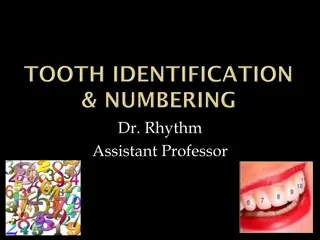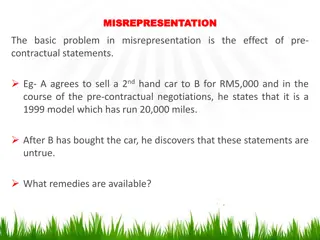
Delay Differential Equations in Biology: Modeling Biological Systems with Time Delays
Explore the application of delay differential equations (DDEs) in biology, highlighting the importance of capturing time delays inherent in biological processes. Learn about the differences between ordinary differential equations (ODEs) and DDEs, the method of solving DDEs, and models like Lotka-Volterra and breast cancer models with DDEs. Discover how DDEs provide a more accurate representation of dynamic systems in the life sciences.
Download Presentation

Please find below an Image/Link to download the presentation.
The content on the website is provided AS IS for your information and personal use only. It may not be sold, licensed, or shared on other websites without obtaining consent from the author. If you encounter any issues during the download, it is possible that the publisher has removed the file from their server.
You are allowed to download the files provided on this website for personal or commercial use, subject to the condition that they are used lawfully. All files are the property of their respective owners.
The content on the website is provided AS IS for your information and personal use only. It may not be sold, licensed, or shared on other websites without obtaining consent from the author.
E N D
Presentation Transcript
Delay Differential Equations and Their Applications in Biology Meredith Heller & Sofia Palmer
Introduction ODEs have been used to model many different types of systems including biological ones But they often cannot capture the rich variety of dynamics observed in natural systems (Forde 1) DDEs include a time delay which makes the systems more logical and accurate biologically Thesis: Delay differential equations include the time delays that inherently exist in biological processes, proving that delay differential equations more accurately model the life sciences
ODEs vs. DDEs Main difference is in their initial conditions ODEs: initial instant of time x(t0) = x0 DDEs: needs the values for all past values of time , in simple DDEs the initial time interval is: [t0- , t0] is a positive constant, that stands for a specific point in time t0- stands for a previous time
Solving: Method of Steps In order to solve DDE s using Method of Steps, need a history function On the interval y(t) is given by p(t) so we can say it is solved for this interval and call it Note: when then becomes
Solving: Method of Steps Cont. This equation is now an ordinary differential equation because is known, it is
Lotka-Volterra Model with a Delay The Lotka-Volterra Predator-Prey Model with delays is shown below: x is the population of prey, y is the population of mature predators, yj is the population of juvenile predators
Breast Cancer Model with DDEs Golnar Newbury uses delay differential equations in his/her research in breast cancer. Uses two other models to create a new model that incorporates time delay for cells in the interphase stage, mitosis phase, as well as the ways in which Paclitaxel, a cycle specific drug, targets tumor cells.
Conclusion DDEs were developed 10-20 years ago, compared to other math concepts this is new, therefore there is more to learn More difficult and complex to solve than ODEs, but luckily technology can be a great aid to solve DDEs The inclusion of delays in mathematical systems which are modeling biological phenomena is a theory and concept that will continue to develop over time, with more research done on them there should be an easier way to solve and analyze them






















